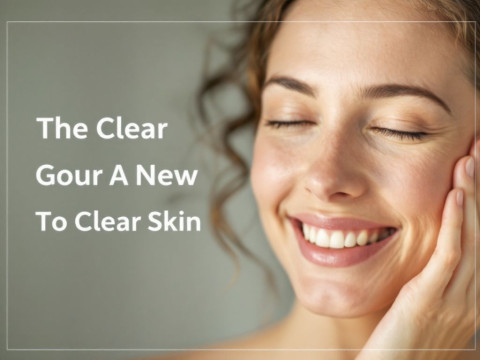Hey there! Ever find yourself glaring at the mirror, shaking a fist at the stubborn acne mocking you from within your reflection? You’re not alone. I’ve been there, and so have countless others. Trust me, the struggle against acne can sometimes feel like waging an endless war with an army of tiny red soldiers popping up uninvited. But here’s the silver lining—certain foods can actually help prevent acne and drive those guys away. Really, it’s true!
Why Diet Matters in the Battle Against Acne
Let’s dive into why diet matters so much when dealing with acne. You see, your skin is kinda like your body’s billboard for what’s happening inside. You can’t just blame external factors like dirt or oils—sometimes, it’s about what’s going in. Eating the right foods can be a game changer in the skin department. Certain foods reduce inflammation, regulate hormones, and boost overall skin health, minimizing breakouts. It’s like hitting the trifecta of skin care simply by tweaking your grocery list. Who wouldn’t want that?
1. Oodles of Omega-3s
Let’s chat about Omega-3 fatty acids for a sec. Everyone and their grandma seem to preach about their benefits, and for good reason. Omega-3s are like a calming balm for inflammation, the root cause of acne. Foods like salmon, chia seeds, and walnuts are rich in these fatty acids. By adding more Omega-3s to your meals, you might not only achieve clearer skin but also get a little brain boost. That’s like two birds, one seed—or fish.
2. Zinc for Zapping Zits
Messages about zinc are buzzing in the skincare community hard. Why? Well, this mineral plays a pivotal role in healing wounds and reducing inflammation. Munch on zinc-rich foods like pumpkin seeds, shellfish, and legumes. Some folks even pop zinc supplements for a healthy glow, but remember—whole foods first! Anyway, pairing these with your diet can help knock acne out of the park.

3. Probiotics: Friendly Bacteria to the Rescue
Okay, probiotics? They’re awesome. The way they work is like magic—except not the hocus-pocus kind. When your gut health is on point, your skin often follows suit. Foods that prevent acne can often be yogurt, kefir, and sauerkraut, as they’re packed with probiotics. Add them to your daily routine and watch your skin thank you in its own pocket-sized, pimple-free way.
4. Low-Glycemic Index: Sugar Crush Without the Crash
Ever notice a breakout following a cookie binge? Not a coincidence. High-glycemic foods spike blood sugar levels, leading to a surge in hormones that can cause acne. Stick to foods with a low glycemic index instead, like whole grains, sweet potatoes, and most fruits. The bonus? Stable energy levels and fewer cravings. Double win!
| Foods | Glycemic Index Category |
|---|---|
| White Bread | High |
| Brown Rice | Medium |
| Lentils | Low |
| Sweet Potatoes | Low |
5. Vitamin A Power: Glow From the Inside Out
Vitamin A—it’s like your skin’s best friend in nutrient form. It’s known for reducing sebum production and encouraging cell turnover. Imagine it as your very own skin rehabs. Foods that are vitamin A powerhouses include carrots, spinach, and sweet potatoes. A colorful plate often means a nourished one, so get munching on those brightly colored veggies!
6. Green Tea: More Than Just Hot Leaf Juice
Drink up, because green tea gets a significant nod in skincare. It’s packed with antioxidants and has anti-inflammatory properties. These can reduce the irritation and redness linked to pimples. Think of it as a super-smooth elixir that soothes from within. Just a couple cups a day and you might notice fewer breakouts and a slightly calmer demeanor along with the toned-down redness. It’s a win all-around!

—
7. Lean Proteins for a Clean Slate
Chicken, turkey, and even plant-based proteins like lentils and beans are fab choices for building that clear skin narrative. Their anti-inflammatory properties now have some backup as well. Proteins rich in amino acids help repair damaged skin cells and keep everything nice and balanced.
8. Hydration Hype: Don’t Skip Water
We can’t talk about foods that prevent acne without a chat about what you’re sipping on—specifically, water. Staying hydrated helps flush out toxins. Basically, when you’re always chugging water, those nasty visitors are getting washed away before they can ruin your skin landscape.
—
Balancing the Skin Equation with More Than Just Food
But hey, food isn’t the only part of the picture. What works for one might not work for all because our bodies have the same construction but radical variances in reactions. So, while you’re swapping cookies for carrots, consider tackling acne with a multifaceted approach.

Sleep: The Missing Piece
Even Batman doesn’t skip his shut-eye (I assume), so why should you? Lack of sleep can lead to stress hormone surges, meaning more breakouts. Try hitting the hay a bit earlier, could totally be a skin-saving move.
Exercise: Sweat It Out
Moving around, whatever your pace, keeps blood flowing well. It enhances nutrient delivery to skin cells. Plus, there’s that post-workout glow that can’t be beat. Just remember to shower after—otherwise it’s your pores’ turn to pout.
—
Wrapping Up
At the end of the day, achieving clear skin is about building habits that work for you. It’s not about fast fixes or magic solutions. Taking the time to build a skin-friendly diet is worth it though, and trust me—your skin will thank you eventually. Watch how incorporating foods that prevent acne and fostering a healthy lifestyle can truly clear the path ahead. And when you get a zit again despite all your efforts (because it happens), don’t sweat it too much. You’re human. Just keep nourishing yourself and adopting these tiny shifts in your routine.
Remember, food is just one part of our lifestyle that can dramatically affect how we look and feel. Be patient, persist and clear, glowing skin could be yours before you know it. So, go ahead, revel in your new rituals, and remember—you got this!
Frequently Asked Questions
What are the benefits of using a hair mask in my hair care routine?
Using a hair mask can provide several benefits, including hydration, smoothing, strengthening, curl definition, heat protection, and damage repair. Hair masks infuse the hair with moisture, help coat the hair shaft to seal split ends, reduce breakage, and protect the hair from heat styling and environmental damage[1][4].
What ingredients should I look for in a hair mask?
Effective hair masks often include ingredients such as coconut oil, argan oil, shea butter, honey, avocado oil, green tea, and coconut water. These ingredients provide nourishment, moisturize, and protect the hair, offering benefits like softening, moisturizing, and protecting against damage[2][5].
How often should I use a hair mask in my routine?
You should use a hair mask whenever your hair feels dry, unmanageable, or in need of intense hydration. This can vary depending on your hair type and needs, but generally, using a hair mask once or twice a week can help maintain healthy and moisturized hair[1][4].
How do I apply a hair mask for the best results?
To apply a hair mask effectively, shampoo your hair first, then apply the mask, focusing especially on the ends where hair tends to be the most damaged. Leave the mask on for anywhere from 10 minutes to overnight, depending on the type of mask and your hair’s needs[1][4].
References










